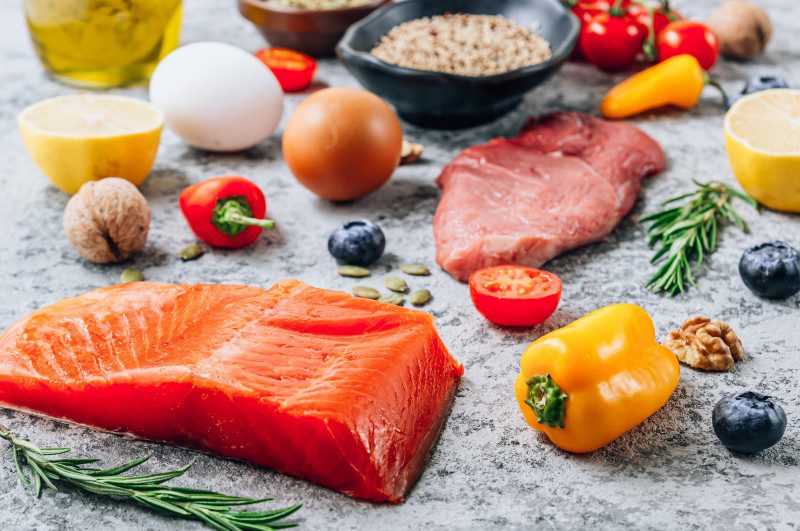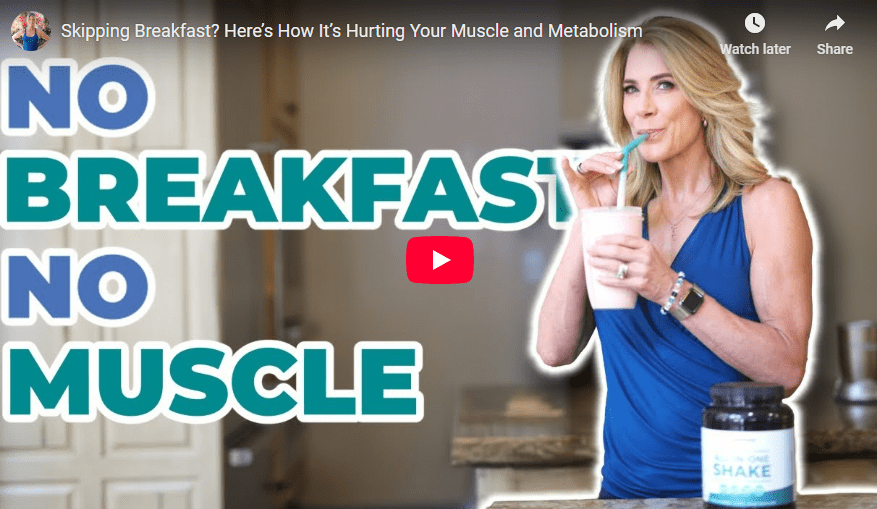When it comes to the trillions of bacteria in your gut, their location determines everything.
Your small intestine demands very specific amounts of bacteria. When too many of these bacteria (even good ones) colonize and overpopulate that organ, a condition called small intestinal bacterial overgrowth (SIBO) can result.
SIBO can wreak havoc in several ways. One is by hindering your small intestine’s ability to absorb nutrients. With SIBO, excess bacteria break down bile salts, which your gut needs to digest fats.
As a result, SIBO can impact your ability to digest fat, leading to nutrient deficiencies and creating problems like diarrhea. Left unchecked, these nutrient deficiencies can contribute to issues like osteoporosis and kidney stones.¹
SIBO can also lead to other gut-related problems, including small intestinal fungal overgrowth (SIFO), where fungal species inhabit the small intestine and multiply.² Researchers have also connected SIBO with irritable bowel syndrome (IBS), an intestinal disorder that creates abdominal pain, bloating, and other unpleasant bowel problems.
Both conditions share many symptoms, including loss of appetite, abdominal pain, and after-meal miseries like gas, bloating, nausea, constipation, and/or diarrhea. Research shows that up to 80% of people with IBS also have SIBO.³
How Do You Know If You Have SIBO?
“Test, don’t guess” has always been my motto. The only way to know for sure whether you have SIBO is by testing.
The least-invasive option is a breath test, which measures the amount of hydrogen or methane you breathe out after drinking glucose and water. A rapid rise in hydrogen or methane when you exhale can indicate bacterial overgrowth in your small intestine.⁴
You can order a hydrogen breath test kit to use in the convenience of your home, without a doctor’s prescription.**
What Are the Causes of SIBO?
Think about when you have guests staying in your home. While a few people probably bring joy and happiness, too many can feel cramped and overwhelming.
The same thing happens with too much bacteria in your small intestine. Most of those bacteria should be in your large intestine, which is properly equipped to house them. Your small intestine doesn’t have that capability. As a result, bacteria overload in your small intestine can interfere with the proper digestion and absorption of nutrients from food. This can lead to digestive discomfort and other gut problems.
How did that excess bacteria get there? Multiple factors often contribute to SIBO, including:
- A slow or impaired digestive system
- Frequent snacking
- Low stomach acid
- Chronic stress
Chronic stress can hurt your gut and overall health. Take Ten Stress Support is a uniquely formulated product that provides gamma-aminobutyric acid (GABA), a key neurotransmitter for a normal, calm stress response. We’ve also added other calming nutrients like glycine, niacinamide, pantothenic acid, and vitamin B6.*
Your diet is another massive culprit: more specifically, a kind of fermentable short-chain carbohydrates called FODMAPS.
FODMAPs: A Suspected Culprit for SIBO
FODMAPs stands for “fermentable oligo-, di-, and monosaccharides and polyols (sugar alcohols).” This acronym refers to types of sugar or carbohydrates that some people have trouble digesting.
As a result, the small intestine draws in extra water to help move the FODMAPs into your large intestine. Excess water in your small intestine creates an environment that allows bacteria to grow and ferment, producing gas and digestive problems. Extra water can also dilute your digestive juices, making it harder for your body to break down food properly.
Unfortunately, if these undigested sugars sit in the colon, the bacteria ferment them, creating unpleasant symptoms.⁵ If you have SIBO or IBS and eat a high-FODMAP food, you may experience abdominal pain or cramping, gas, burping, bloating, flatulence, constipation, and/or diarrhea.
That’s where a low-FODMAP diet may help. Researchers have found that 52–86% of people with IBS report significant improvement when they eliminate FODMAPs.⁶
I’ve seen similar results with SIBO in my community.
Using a Low-FODMAP Diet
As its name implies, a low-FODMAP diet eliminates foods high in FODMAPs. By eliminating these foods for a certain period, you can reduce the symptoms that accompany these conditions. Ultimately, a low-FODMAP diet helps you determine which foods work for and against you.⁷
I have to warn you, the list of foods to avoid on a low-FODMAP diet is lengthy. They include:
- Wheat and rye products
- Certain stone fruit (including apricots, cherries, peaches, and prunes)
- Persimmons
- Watermelons
- Artichokes
- Beets
- Some cruciferous vegetables (including broccoli, Brussels sprouts, and cauliflower)
- Fennel
- Garlic, leek, and onions
- Some nuts and seeds (including cashews and pistachios)
- Lentils
- Chickpeas
- Mushrooms⁸
If you’re following The Virgin Diet, you’re likely aware that some foods (such as wheat) overlap with the seven highly reactive foods that I recommend avoiding. But many others — including legumes, cruciferous vegetables, nuts, and seeds — are highly recommended on my plan.
A lot of foods on TVD are not compatible with a low-FODMAP diet. So what’s a gal to do? I recommend addressing SIBO first.
A low-FODMAP diet is very hard, but it gets good results in healing SIBO. (Do keep in mind that while it might be difficult, but it’s only intended to be done on a short-term basis, so it’s not forever!)
Start there, and be sure you’re working with a healthcare pro who can monitor each phase of the elimination diet and help you customize your eating plan. Once you’ve done that, then you can shift into The Virgin Diet.
How Do I Do a Low-FODMAP Diet?
To follow a low-FODMAP diet, you’ll want to keep a list of forbidden foods nearby, because the categories are unfortunately not intuitive.
You’ll do the elimination diet in three phases:
- Elimination phase (2–6 weeks): Eliminate all high-FODMAP foods.
- Reintroduction phase (8 weeks): Systematically add foods back in. Here, you’ll keep the low-FODMAP diet, but reintroduce a high-FODMAP food from each FODMAP category, one at a time. You’ll spend a few days testing each food, increasing quantities to find what works. Between each test, you’ll spend a few days back on the strict elimination diet to avoid any crossover effects.
- Maintenance phase: Keep the foods that work for you and leave out the ones that don’t.⁹
If you’ve been on The Virgin Diet, the process is the same. It’s just the types of foods you’re avoiding that are different.
The good news is that up to 75% of people who use a low-FODMAP diet can get results in six weeks or less.¹⁰
The not-so-good news? Because it’s so restrictive, if the diet is not done properly, you can end up low in critical vitamins and minerals like iron, calcium, vitamin D, and folate.¹¹ Researchers highly recommend working with a trained health professional who can clearly explain the different phases, make sure you’re getting adequate nutrition, and help you personalize your diet moving forward.¹²
I also recommend Monash University’s FODMAP app to help you identify foods to avoid and include throughout each phase. It uses a traffic-light system to show you which foods are high, moderate, and low in FODMAPs and specifies which ones.
Do You Need to Do a Low-FODMAP Diet?
While a low-FODMAP diet can be helpful in the short term to pinpoint problem foods and reduce symptoms of SIBO and IBS, these diets can be challenging to do the right way.
You might consider starting with a low-FODMAP plan and gradually moving into a less-restrictive version, such as The Virgin Diet. Research shows that some foods, such as gluten, can trigger symptoms of small intestinal disorders.¹³
4 Ways to Reduce Symptoms of IBS and SIBO
By eliminating gluten and six other highly reactive foods for at least 21 days during TVD, you cool down inflammation and go a long way toward healing your gut. Along with The Virgin Diet, I’ve found that these four strategies can help reduce many of the symptoms that accompany IBS and SIBO while providing gut-healing support.
1. Gradually Eliminate Sugar
Bacteria in your small intestine feed on sugar, creating the gas, bloating, and other uncomfortable symptoms that accompany SIBO. Sugar can also worsen IBS symptoms when you have SIBO. Put another way, ditching sugar is a great way to manage SIBO and IBS.
If you’ve ever eliminated sugar from your diet all at once, you may be familiar with what going cold turkey from sugar does to your system: the feeling of withdrawal can be very unpleasant, and suddenly you’re tempted by sugar cravings everywhere.
I’ve found a better way of reducing sugar in the Sugar Impact Diet, where you taper and transition instead of eliminating sugar all at once.
Many people start with The Virgin Diet to address food intolerance and transition into the Sugar Impact Diet to conquer sugar addiction. This blog can help you decide which plan to start with.
2. Manage Inflammation
When the bacteria in your small intestine fall out of balance, an inflammatory response can result that creates many symptoms of SIBO.¹⁴ Researchers also find that this simmering, low-grade kind of inflammation contributes to IBS.¹⁵
Gut inflammation can create other problems, including leaky gut. Eventually, gut inflammation can become systemic inflammation, which can be deadly.
3. Take a Digestive Enzyme
Before food can enter your small intestine, it must pass through your stomach. There, stomach acid can destroy potentially harmful bacteria. When you’re not making enough stomach acid, that bacteria can slip into your small intestine and contribute to problems like SIBO.
What’s more, a lack of digestive enzymes means that food stays in the small intestine longer, allowing more time and opportunity for bacteria to grow and ferment. This can increase the number of bacteria in your small intestine and make SIBO symptoms worse.
Age and stress can also lower your body’s production of digestive enzymes. Conditions like SIBO and IBS then become more common.
Taking digestive enzymes with betaine HCl can provide hydrochloric acid (stomach acid) to improve digestion. HCl helps breaks down food, especially protein, in your stomach where it should be broken down. Once it moves to the small intestine, that undigested protein provides a source of food for bacteria, which can lead to an overgrowth of bacteria in the small intestine and contribute to SIBO.
I’ve found that anyone over 35 or who has chronic stress can benefit from supplementing with a digestive enzyme. We’ve combined digestive enzymes, select botanicals, and betaine HCl in Protein First Enzymes to help promote the efficient digestion of proteins, fats, and carbohydrates like a pro!*
4. Address Nutrient Deficiencies
Even when they eat a balanced diet, some people with SIBO have nutrient deficiencies.¹⁶ Research shows that SIBO contributes to deficiencies in several B vitamins, as well as fat-soluble vitamins including A, D, and E.¹⁷
As you’re healing the inflammation and other damage within your gut, you’ll want to make sure you’re addressing these deficiencies. While other nutrients can help, a high-quality multivitamin and anti-inflammatory omega-3 fatty acid supplement is a great place to start.
We’ve removed the guesswork and included all your basic nutrients in our convenient Daily Essentials Multi + Omegas packets. Every packet combines a superior multivitamin-mineral and omega-3s fatty acids. Pack one in your purse or bag, take with a meal, and bam… you’ve met your foundational nutrient needs!
*These statements have not been evaluated by the Food & Drug Administration. Products mentioned are not intended to diagnose, treat, cure, or prevent any disease. The views in this blog by JJ Virgin should never be used as a substitute for professional medical advice. Please work with a healthcare practitioner concerning any medical problem or concern.
**I couldn’t make it without supportive relationships, and I bet you feel the same! That’s why my team and I offer you products and services we believe in. If you happen to purchase something I recommend here, I may receive some kind of compensation. However, I only bring you partners whose content and core values will serve you with the same commitment to excellence my team and I strive for every day. Please be in touch with any concerns.
References:
- https://www.mayoclinic.org/diseases-conditions/small-intestinal-bacterial-overgrowth/symptoms-causes/syc-20370168#
- Davis, William. Super Gut. NY: Hachette Go (February 1, 2022).
- https://connect.uclahealth.org/2022/05/02/sibo-similar-to-ibs-but-in-small-intestine/
- https://www.mayoclinic.org/diseases-conditions/small-intestinal-bacterial-overgrowth/diagnosis-treatment/drc-20370172
- https://my.clevelandclinic.org/health/treatments/22466-low-fodmap-diet
- Liu J, Chey WD, Haller E, Eswaran S. Low-FODMAP Diet for Irritable Bowel Syndrome: What We Know and What We Have Yet to Learn. Annu Rev Med. 2020 Jan 27;71:303–314. doi: 10.1146/annurev-med-050218–013625. PMID: 31986083.
- https://www.hopkinsmedicine.org/health/wellness-and-prevention/fodmap-diet-what-you-need-to-know
- Syed K, Iswara K. Low-FODMAP Diet. [Updated 2022 Sep 5]. In: StatPearls [Internet]. Treasure Island (FL): StatPearls Publishing; 2022 Jan-. Available from: https://www.ncbi.nlm.nih.gov/books/NBK562224/
- https://my.clevelandclinic.org/health/treatments/22466-low-fodmap-diet
- Syed K, Iswara K. Low-FODMAP Diet. 2022 Sep 5. In: StatPearls [Internet]. Treasure Island (FL): StatPearls Publishing; 2022 Jan–. PMID: 32965895.
- Bascuñán KA, Elli L, Pellegrini N, Scricciolo A, Lombardo V, Doneda L, Vecchi M, Scarpa C, Araya M, Roncoroni L. Impact of FODMAP Content Restrictions on the Quality of Diet for Patients with Celiac Disease on a Gluten-Free Diet. Nutrients. 2019 Sep 14;11(9):2220. doi: 10.3390/nu11092220. PMID: 31540014; PMCID: PMC6770200.
- Bellini M, Tonarelli S, Nagy AG, Pancetti A, Costa F, Ricchiuti A, de Bortoli N, Mosca M, Marchi S, Rossi A. Low FODMAP Diet: Evidence, Doubts, and Hopes. Nutrients. 2020 Jan 4;12(1):148. doi: 10.3390/nu12010148. PMID: 31947991; PMCID: PMC7019579.
- Rej A, Potter MDE, Talley NJ, Shah A, Holtmann G, Sanders DS. Evidence-Based and Emerging Diet Recommendations for Small Bowel Disorders. Am J Gastroenterol. 2022 Jun 1;117(6):958–964. doi: 10.14309/ajg.0000000000001764. Epub 2022 Apr 8. PMID: 35404303; PMCID: PMC9169759.
- Dukowicz AC, Lacy BE, Levine GM. Small intestinal bacterial overgrowth: a comprehensive review. Gastroenterol Hepatol (N Y). 2007 Feb;3(2):112–22. PMID: 21960820; PMCID: PMC3099351.
- Ng QX, Soh AYS, Loke W, Lim DY, Yeo WS. The role of inflammation in irritable bowel syndrome (IBS). J Inflamm Res. 2018 Sep 21;11:345–349. doi: 10.2147/JIR.S174982. PMID: 30288077; PMCID: PMC6159811.
- https://connect.uclahealth.org/2022/05/02/sibo-similar-to-ibs-but-in-small-intestine/
- Adike A, DiBaise JK. Small Intestinal Bacterial Overgrowth: Nutritional Implications, Diagnosis, and Management. Gastroenterol Clin North Am. 2018 Mar;47(1):193–208. doi: 10.1016/j.gtc.2017.09.008. Epub 2017 Dec 7. PMID: 29413012.





